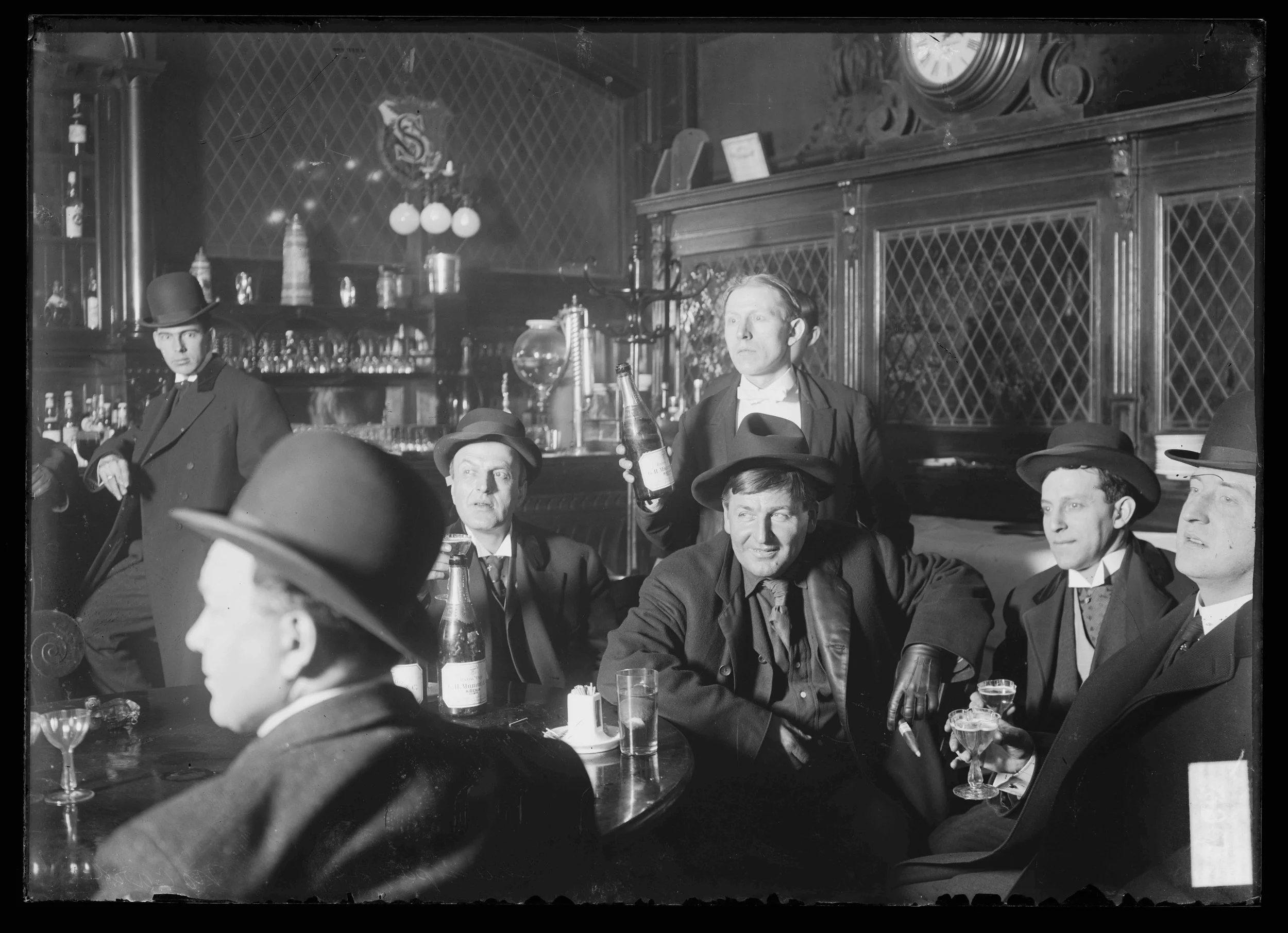Beer, Culture, and Community
From labels and logos to tavern games and beer bars, the story of beer is, at its core, the story of people. Each era’s designs, traditions, and pastimes reflect the culture of their time—what people valued, how they connected, and how they celebrated together.
Beer has never been just a drink. It is a shared experience, a canvas for creativity, and a thread that weaves through communities across centuries and continents. The way people make, serve, and enjoy beer tells us about identity, craftsmanship, and the joy of gathering.
This exhibition invites you to explore three interconnected areas that together reveal how beer continues to shape and reflect our cultural life: 19th century taverns as community hubs, Tied Houses as branding barons, and Drinkware and bar games as cultural connectors.
19th Century Taverns as Community Hubs
In 19th century Chicago, taverns were more than places to drink—they were cornerstones of immigrant life. Inside, newcomers gathered to speak familiar languages, enjoy traditional food and music, celebrate holidays, and exchange news from home. Taverns often served as informal job centers, political meeting spots, and spaces where cultural organizations took shape.
Their design reflected their purpose: communal tables for conversation, walls decorated with flags or family mementos, and open rooms that welcomed all. These were places of belonging and connection, where people forged community in a new city. In many ways, the taverns of 19th-century Chicago embodied the spirit of the city itself—diverse, hardworking, and deeply social.
Tied Houses: Architecture, Advertising, and Brewery Branding
Between 1880 and 1915, many British-owned breweries built tied houses—taverns that sold only their beer. Investing in ornate, eye-catching architecture served as a striking alternative to traditional advertising. These taverns shaped neighborhood streetscapes and acted as everyday billboards for a single brand.
Among the most recognizable were the Schlitz taverns across Chicago. Many featured custom terra cotta reliefs of the brewery’s iconic “globe and belt” logo, first created for the 1893 World’s Fair in Chicago. These emblems went beyond decoration, marking the tavern unmistakably as a Schlitz house and embedding the brewery’s identity into the city’s architecture.
Drinkware and Games: Design, Play, and Community
From Ancient Greek rhyta to English puzzle jugs, and from the Spanish porrón to northern Europe’s passglas, drinking vessels have long shaped social interaction. Their forms—whether perforated, ringed, or ornately decorated—defined playful challenges that tested skill, dexterity, and wit. Bar games, past and present, offer insight into both design and social culture: the shape, form, and rules of each game structure interaction, foster communal engagement, and reveal how drinking rituals have long been guided by aesthetics, creativity, and shared experience.




